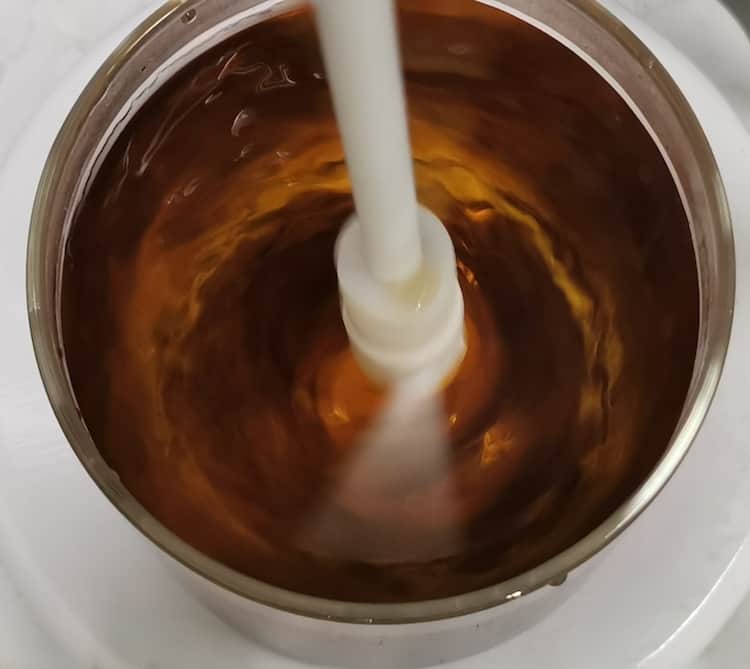If you stir a colloidal solution containing nanoparticles, you might expect the particles to disperse evenly through the liquid. But that’s not what happens. Instead, the particles end up concentrated in a specific region, and may even clump together. This unexpected result is an example of Einstein’s tea leaf paradox, and the researchers at Tongji University in China who discovered it – quite by accident – say it could be used to collect particles or molecules for detection in a dilute solution. Importantly, it could also be used to make aerogels for technological applications.
We usually stir a liquid to evenly disperse the substances in it. The phenomenon known as Einstein’s tea leaf paradox describes a reverse effect in which the leaves in a well-stirred cup of tea instead become concentrated in a doughnut-shaped area and gather at the bottom centre of the cup once stirring ceases. While this paradox has been known about for more than 100 years and is understood to be caused by a secondary flow effect, there are few studies on how it manifests for nanoparticles in a stirred solution.
Liquid “squeezing”
Researchers led by Ai Du of the School of Physics Science and Engineering at Tongji University in Shanghai have now simulated how gold nanoparticle spheres dispersed in water move when the solution is stirred. When they calculated the flow velocity distribution of the fluid, they found that the rate at which the particles move appears to follow the fluid’s flow velocity.
“Interestingly, by dividing the whole container into several sectors, we also observed that the high-velocity region driven by the stirrer was also the region in which the particles aggregated,” explains Du. “We think that this phenomenon is probably due to direct ‘squeezing’ of the liquid created by the stirrer and comes from the mass differences between the nanoparticles and the liquid phase.”
Du says that he and his colleagues discovered the effect quite by accident – thanks to a pack of Longjing tea leaves that Du received from a friend as a present. “I drink this tea in my office almost every working day,” Du recounts. “In China, we have many different ways of making tea, but I chose the simplest method – that is adding hot water to a mug containing the loose tea. While I really enjoy the tea moment, cleaning the mug is less pleasant. You can’t throw the tea leaves directly into the sink as this would block the drains so I add some water into my mug and then quickly pour the contents out into a tea trash can with a mesh. I have to repeat this process several times since some tea leaves always end up sticking to the inside surfaces of the mug. This is a waste of water and my time.
“One day I remembered Einstein’s tea leaf paradox,” he tells Physics World, “so I tried rotating the tea leaves and water mixture by rapidly rotating the mug. In this way, I succeeded in getting rid of all the leaves and the water in one go.”
Speeding up gelation
Du spoke about this episode – and the associated theory – with one of his PhD students, Zehui Zhang, who, by coincidence, was having trouble with an experiment in which he was trying to prepare high-purity gold aerogels by dispersing gold nanoparticles in an aqueous chlorine solution. Zhang had chosen a simple technique to prepare the aerogel that did not involve any surfactants, but this approach meant he had to wait almost a week for the gold nanoparticles to sediment out. Heating the solution did not significantly accelerate aggregation either.
“He found that by stirring the solution, the gelation occurred in just 20 minutes,” says Du. “We discussed the mechanism and concluded that it was probably caused by Einstein’s tea leaf paradox. This prompted us to study the effect in more detail.”
Du says the new method, which is detailed in Science Advances, could help make other aerogels in the future and he and his colleagues have already starting preparing different kinds of metal and oxide aerogels to test their technique. “The localized concentration effect in laminar flow may also be used to collect particles or molecules from a dilute solution, which could be used for trace detection in life sciences in environmental engineering,” he says.


